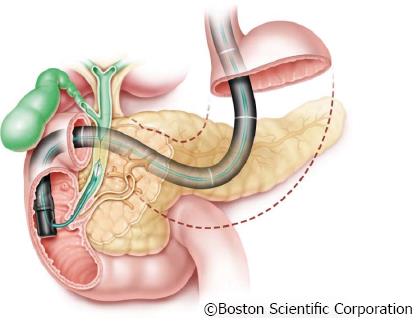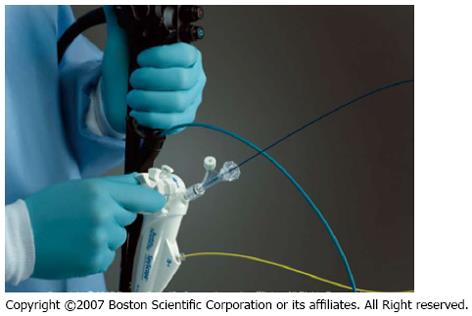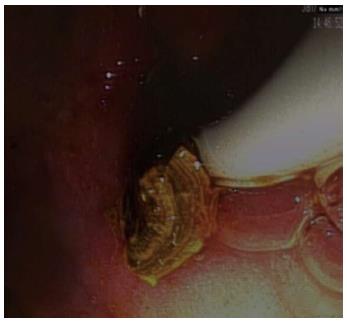Copyright
©2013 Baishideng Publishing Group Co.
World J Gastrointest Endosc. May 16, 2013; 5(5): 203-210
Published online May 16, 2013. doi: 10.4253/wjge.v5.i5.203
Published online May 16, 2013. doi: 10.4253/wjge.v5.i5.203
Figure 1 Principle of “Mother-Baby” endoscope technique.
Figure 2 Single-operator choledochoscopy system: “SpyGlass Direct Visualization System®”.
Figure 3 SpyGlass system as integrated platform with light source, camera and monitor.
Figure 4 Components of the SpyGlass system.
Figure 5 SpyScope.
Figure 6 Re-designed biopsy forceps.
Figure 7 Typical cholangioscopic findings (source: A Hoffman).
A: Normale bile duct; B: Inflammation with stricture; C: Cholangiocellular carcinoma with villous like appearance; D: Cholangiocellular carcinoma with ulcers and intraluminal growth.
Figure 8 Stone after direct probe-targeted fragmentation via short-pulsed laser waves (holmium laser) (Source: A Hoffman).
- Citation: Hoffman A, Rey JW, Kiesslich R. Single operator choledochoscopy and its role in daily endoscopy routine. World J Gastrointest Endosc 2013; 5(5): 203-210
- URL: https://www.wjgnet.com/1948-5190/full/v5/i5/203.htm
- DOI: https://dx.doi.org/10.4253/wjge.v5.i5.203




















